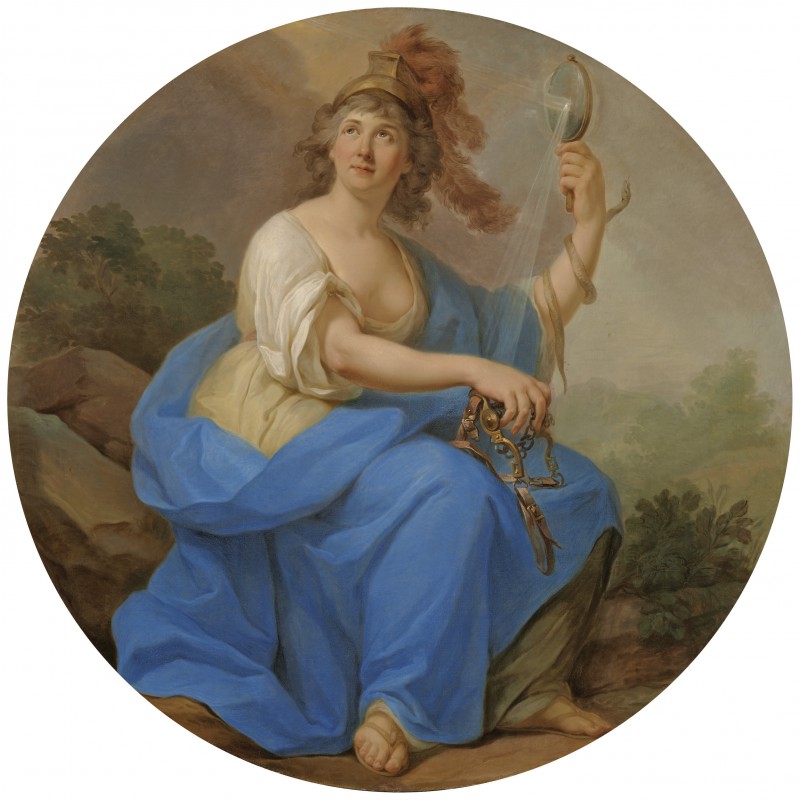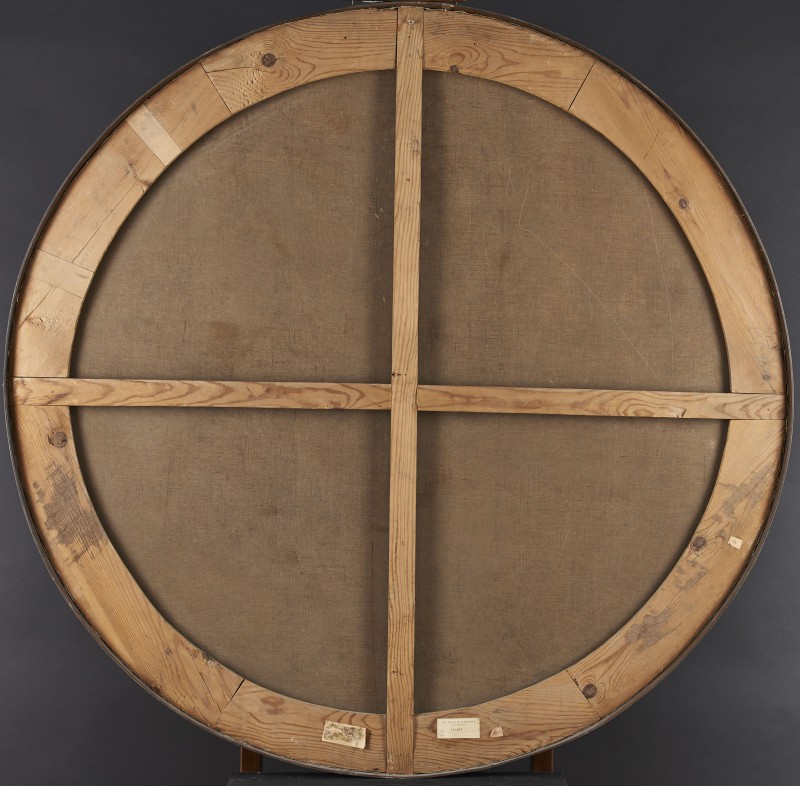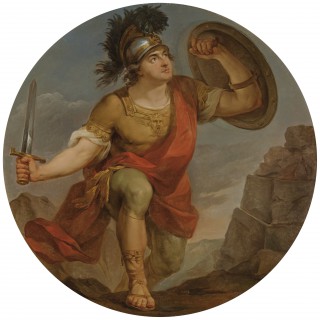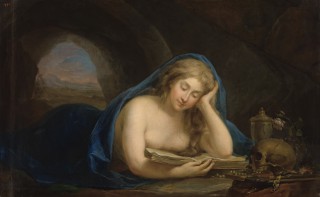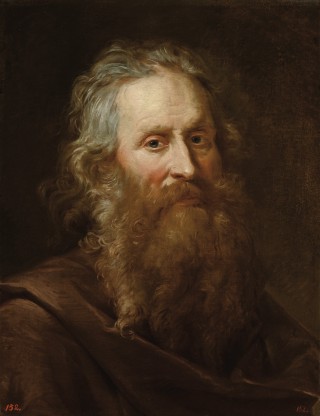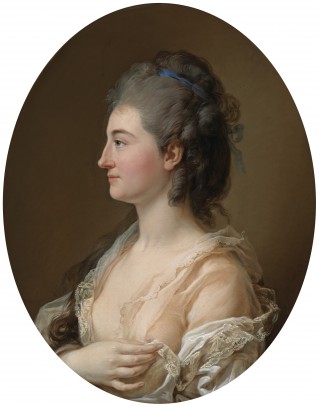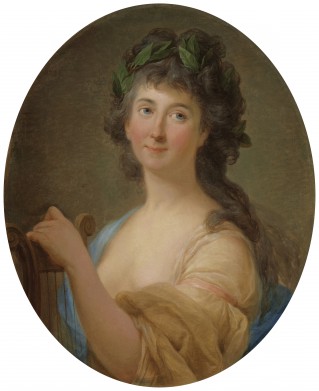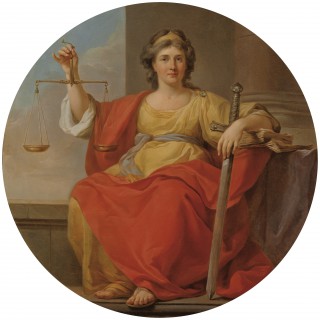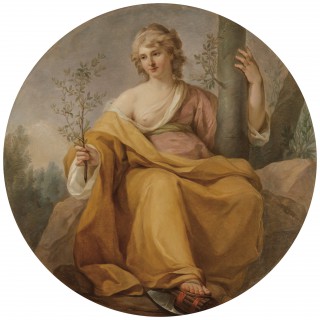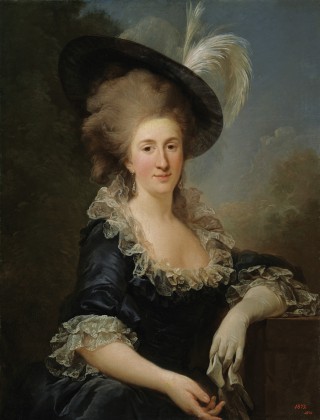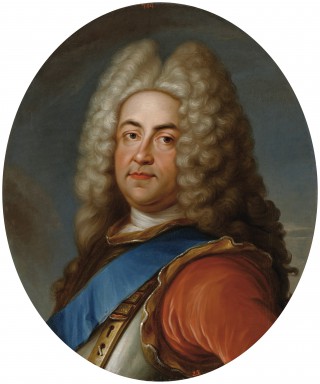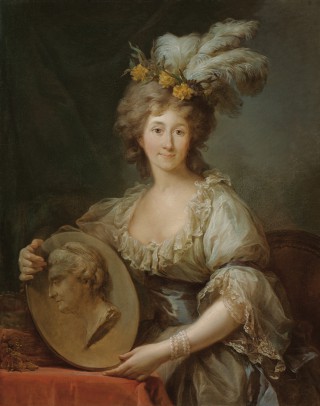Prudence
- Date
- 1792-1793
- Object type
- painting
- Technique
- oil
- Material
- canvas
- Dimensions
- dia.: 154,8 cm
- Acquisition date
- 1793
- Location
- The Palace on the Isle - Salle de Salomon, ground floor
- Place of Origin
- Warsaw (Poland, Mazowieckie)
- Owner
- The Royal Łazienki
- Museum number
- ŁKr 126
The depiction is a modified version of two likenesses of Prudence (Prudenza) which Cesare Ripa describes in his Iconology … . Bacciarelli took the attributes, such as the helmet and mirror, which symbolize the ability of self-evaluation and correction of one’s own mistakes, from Ripa’s second description. The figure’s forearm is entwined by a mythical snake-like fish, an echeneis (remora), which also appears in Alciatus’ Emblem LII.Ripa quotes Pliny, who writes that latching onto a ship it is able to stop it, thus it is the symbol of tardiness. It could also be the snake described in Ripa’s first version of Prudenza, because in the second, (which is also the case in Alciatus), the echeneis is not wound around the arm, but on the shaft of the arrows. In her left hand, the personification in Bacciarelli’s painting holds a horse’s bit, which is an attribute of Moderation … and Reason … , thereby reinforcing its importance—Wisdom should be guided by moderation, avoiding hasty decisions. A similar symbolic meaning can be found in the Allegory of Learning, the overdoor painted by Bacciarelli several years earlier (1775–77) for the Old Audience Chamber at the Royal Castle … . … it shows Aristotle, who personifies wisdom, holding a horse’s bit while teaching the young and impetuous Alexander the Great (cf. also cat. no. 5). [See D. Juszczak, H. Małachowicz, The Stanisław August Collection of Paintings at the Royal Łazienki. Catalogue, Royal Łazienki Museum, Warsaw 2016, no. 12, p. 83.]
